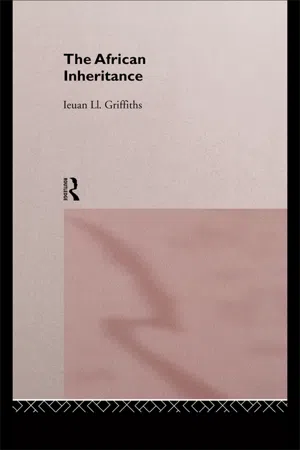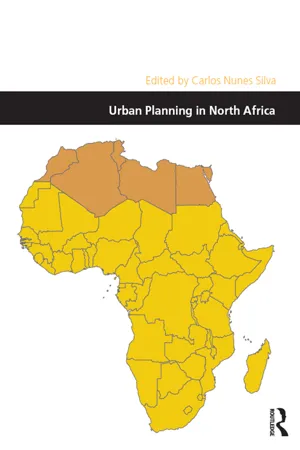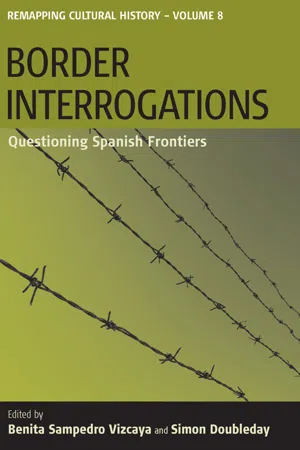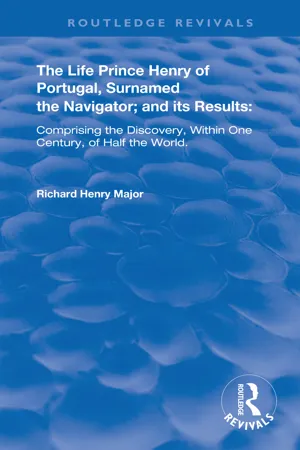History
Conquest of Ceuta
The Conquest of Ceuta refers to the capture of the North African city of Ceuta by the Portuguese in 1415. Led by Prince Henry the Navigator, the conquest marked the beginning of European expansion into Africa and established Portugal as a major maritime power. The event also paved the way for subsequent European exploration and colonization of the African continent.
Written by Perlego with AI-assistance
Related key terms
4 Key excerpts on "Conquest of Ceuta"
- eBook - ePub
- Ieuan Ll. Griffiths(Author)
- 2005(Publication Date)
- Routledge(Publisher)
3EUROPEANS AND AFRICA, 1415–1885
In August 1415 Ceuta, a fortified emporium on the north coast of Morocco, was taken by a Portuguese army which included the young Prince Henry the Navigator, who was to play a significant, though probably exaggerated, role in the Portuguese exploration of Africa. Ceuta was successfully held by the Portuguese until in 1593 it became Spanish when the crowns of Spain and Portugal were united. Ceuta remained Spanish after the separation of the two kingdoms in 1640, and is Spanish to this very day. Europe’s first toe-hold is also Europe’s last finger-hold on the African continent.The taking of Ceuta is significant in the Christian fight-back against the spread of Islam under the Moors who had crossed into Iberia in the eighth century AD. Portugal, first recognized as a Christian kingdom in the twelfth century, enhanced its Christian status by taking the war to the Moors but also sought an economic future. The taking of Ceuta was not just a nationalistic and religious crusade but an attempt to secure the Straits of Gibraltar for Portuguese trade. It was also a bid for a stake in trans-Saharan trade because Ceuta was at the northern end of an important caravan route. The Portuguese would already have known of the fabled wealth of West Africa from reports of the pilgrimage of Mansa Musa of ancient Mali to Mecca via Cairo in 1347 when his camels were allegedly loaded with 15 tons of gold. West African gold encouraged the Portuguese voyages of exploration and permeated the European consciousness to the extent that Shakespeare could ‘speak of Africa and golden joys’ (King Henry IV, Part II, Act 5, Scene 3, Line 101)Early European interest in Africa was founded on two interwoven motives, which were to prevail for almost five hundred years: Christian militancy and trade. In the late nineteenth century David Livingstone claimed that opportunities for Christian missions and ‘legitimate’ (non-slave) trade were the main attractions of the African interior. - eBook - ePub
- Carlos Nunes Silva(Author)
- 2016(Publication Date)
- Routledge(Publisher)
Chapter 4 Ceuta Circa 1930: The Construction of a Functional City in the North of Africa María Cristina García González and Salvador Guerrero López IntroductionCeuta is a Spanish port city situated in the North of Africa, on the edge of the continent. Its privileged geographical position makes it a bridge between Europe and Africa, located between the Mediterranean Sea and the Atlantic Ocean. Spain has always been closely linked to the North of Africa, holding sovereignty over the cities of Ceuta and Melilla since the sixteenth century.In 1912 the Hispano-French Treaty was signed, in response to British interests to reduce French power in the North of Africa and thus balance the influences of the colonial powers in the area. This then made Ceuta the gateway to the newly created Spanish Protectorate (Bravo Nieto, 2001) through the connection of its port with those of Algeciras and Gibraltar. However, neither Ceuta nor Melilla were included in the Spanish Protectorate as they were both considered to be provinces of Spanish sovereignty. Tangier, another important nearby city, held a special statute; it was declared a French port yet an international city under French, British and Spanish control.The southern side of the Spanish Protectorate bordered the extensive French Protectorate (Sica, 1981), where, in 1914, Marshall Lyautey (1854–1954) passed an ambitious urban planning policy for the cities of the French Protectorate, promulgating a document with the purpose of regulating town planning activities in the French territories, adding special powers of expropriation. For this, he had the cooperation of the architect and town planner Henry Prost (1874–1959), who was assigned the task of collecting data at a local level and of drafting the plans for the reformation and the expansion of the large cities in the French Protectorate, such as Rabat, Casablanca (Cohen and Eleb, 2002), Meknes, Fez, and Marrakesh, as well as the establishment of new-build cities like Khouribga and Kenitra. The guiding principle of his work was to separate the indigenous and European communities. It was done in such a way that the towns that already existed were conserved, ensuring as little intervention as possible, and the open spaces on the outskirts were arranged in a way that reflected the layout of a European city. It was also necessary to define the function of each district, be it for commerce, for industry, or for leisure purposes, and so on. Finally, enough space for future growth was required. - eBook - ePub
Border Interrogations
Questioning Spanish Frontiers
- Benita Samperdro Vizcaya, Simon Doubleday(Authors)
- 2008(Publication Date)
- Berghahn Books(Publisher)
Civitas Romanorum. The Vandals, who swept Spain prior to the Islamic invasion of the peninsula, occupied Ceuta and burnt it to the ground in 429. The Byzantine emperor Genserico took charge of Ceuta some hundred or so years later and in the eighth century, Ceuta acted as a launching pad for the Islamic invasion of the Spanish peninsula. During Islamic rule, Ceuta fell for a while under the control of the court of Córdoba and thus benefited from the superior levels of artistic and scientific endeavor that marked this court. By the fourteenth century, Ceuta had become an active Mediterranean port, regularly receiving sailors and ships from around the Mediterranean. The Christians reconquered Ceuta in 1309, after which it belonged to Spain, itself joined to Portugal for much of the sixteenth and early seventeenth centuries. As gateway to the Atlantic, Ceuta witnessed the passage of numerous ships, carrying slaves and merchandise, on their way to the Americas. When the two Iberian kingdoms separated again in 1640, Ceuta opted to remain as part of Spain, a choice that has endowed the city with an aura of patriotic fervor that is reiterated by the authorities to this day. Heightening Ceuta’s affiliation to Spain was the siege laid on the city by Muley Ismael of Morocco, following the unification of the latter in 1672. Ceuta, an extremity of Spain, was at once the “most loyal and faithful” (as proclaimed by the city’s motto) of its appendages.By this very token, Ceuta, guardian of Europe’s southernmost border, is charged with historical significance: since Spain’s transition to democracy, it has simultaneously asserted Spain’s integration into Europe in the wake of four decades of isolated dictatorship and also held symbolic significance for Spanish cultural memory. Most importantly, this affirmation of Spain in North Africa commemorates Spain’s expulsion of the Moors in 1492 and the extension beyond the peninsula of a Spanish identity unified under the Catholic Church. Even more significantly, the Guerra de África, a war that ideologically united the otherwise deeply divided political factions of nineteenth-century Spain and that resulted in the successful procurement of a Protectorate by Spanish powers on Maghrebian lands, was launched from Ceuta. The first of the battles to be won by the Spaniards took place just outside Ceuta and the war ended with a peace accord being signed by the Sultan of Fez that confirmed Spanish control of hitherto Moroccan territories. Nor was this the only war that Ceuta is known for. In July 1936, the Movimiento Nacional launched the Civil War from Ceuta under the leadership of General Francisco Franco, himself experienced in quelling rebellion in colonized Moroccan territories, and rapidly took it northward across the country. He took with him from the port of Ceuta a sizeable convoy of Moroccan troops, who were to fight the Republicans on behalf of the Nationalists. For this reason, the Virgen de África, the Virgin of Ceuta, worshipped in the imposing cathedral on the Plaza de África - eBook - ePub
The Life of Prince Henry of Portugal
Surnamed the Nabigator and its Results
- Richard Henry Major(Author)
- 2020(Publication Date)
- Routledge(Publisher)
Chapter III. Ceuta.A.D. 1415.Now that Portugal was at peace with Castile, it began to attain a high degree of prosperity, and King João, though dreaded by his neighbours, was beloved by his people. The glory identified with his name served as a stimulus to the ambition cf his sons, the three eldest of whom, Duarte, Pedro, and Henry, were now of age, and had been admirably trained by their father in every chivalrous accomplishment. The princes were anxious to receive the honour of knighthood; but, as this was a distinction only to be gained at the point of the sword, the King proposed to hold a succession of tournaments during an entire year, to which knights of all nations, and of the highest renown in feats of arms, should be invited. His minister of finance, João Affonso de Alemquer, represented to him the useless expenditure inseparable from such a plan, and suggested that an invasion of the Moorish city of Ceuta would offer a far more honourable and fitting opportunity for conferring the rank of knighthood upon the princes, while it would be carrying the sword of the avenger into the country of their former conquerors, and opening a door to the advance of Christianity. The King yielded to the representations of his minister and the wishes of his sons, to whom the idea of winning their spurs at a tournament was most distasteful.Desiring to obtain as much information as possible respecting the strength and position of Ceuta, he had recoursen to the following stratagem. He sent Affonso Furtado de Mendoza and Alvaro Gonsalves de Camelo, prior of the hospital of St. John of Jerusalem, as envoys to Sicily, to ask the hand of the Queen in marriage for Dom Pedro, and as the vessels must necessarily pass near Ceuta, where ships of different nations were in the habit of stopping, he desired the envoys to make the most of the opportunity to examine the place. Accordingly, under pretence of taking in provisions, which, in their character of ambassadors, they were permitted by the Governor to do, they remained four days in the city, carefully noting everything about which the King needed information.
Learn about this page
Index pages curate the most relevant extracts from our library of academic textbooks. They’ve been created using an in-house natural language model (NLM), each adding context and meaning to key research topics.



